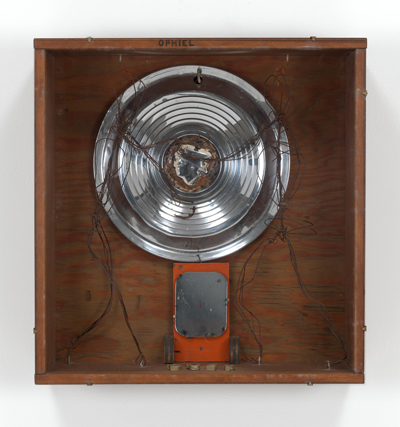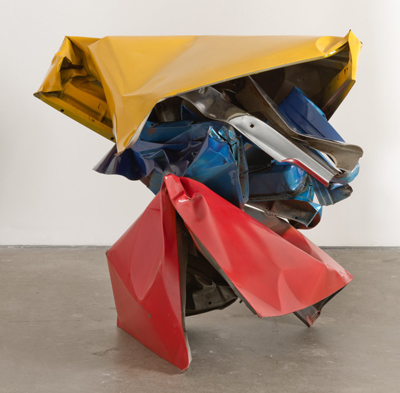|
|
||
|
From lightbulbs and chairs to flags and bedclothes, this show traces artists’ engagement with everyday objects that might have been disregarded, says Laura McLean-Ferris Titled after Jasper Johns’s note in a sketchbook from 1964 – “Take an object / Do something to it / Do something else to it. [Repeat.]” – this one-room collection show at MoMA articulates artists’ transforming approaches to found, everyday objects from the 1950s to 70s. Loosely orbiting figures such as Jasper Johns, Robert Rauschenberg and John Cage, it’s also a purposeful reminder of the strength of MoMA’s collection in the face of the Whitney Museum of American Art’s elegant, thoughtful hang of its own American collection at its new home downtown in the Meatpacking District.
Gemini (The Zodiac Behind Glass Series), 1965, by George Herms Johns’s own seminal painting Flag (1954-55) is a large rendering of the American Stars and Stripes made from three canvases slotted together, on which encaustic (a mix of pigment and molten wax) has been painted over newspaper in the requisite shades of red, white and blue. Much has been written about Johns’s flags, but something that remains on repeated viewing is the way that dramatic brushwork and messiness (associated at the time with abstract expressionism) both disappear and reappear when they take the form of “something the mind knows”, as Johns himself put it. Its troubling nature – so very close to being a rendering of an existing pattern – is reflected in the museum’s relationship with the work: it was rejected by MoMA’s acquisitions board in 1958 for being a “facsimile”, and instead purchased by a patron who gifted it to the museum in 1973. Painting Bitten by a Man (1961), another work made using encaustic, painted thickly in grey on a type plate, with its missing, toothmarked mouthful, remains compelling not so much for its violence or drama, but for its dulled, dialed down murmur and even funerary presence. Rauschenberg’s seminal Bed (1955), the artist’s pillow and bedclothes used as a canvas for messy, expressionistic paint, mainly around the areas that would ordinarily have contact with a body, rhymes well with Nikki de Saint Phalle’s Shooting Painting (1961), which was made for Cage’s Variations II performance in Paris. For this work, bags of paint that were affixed to the top of a canvas above various found objects such as a bucket seat, a hatchet and a toy gun, and then shot with a gun at the performance, bursting the paint bags so they dribbled down the canvas in drippy stripes. Though many of the exhibition’s keystone historical moments are departures from painting, it continues from here to trace a strong drive towards everyday objects that might have been disregarded. Dan Flavin’s Roses (1962-66) for example, makes use of a tiny Aerolux bulb shaped like a flower, which is both tacky and sweetly delicate, anticipating his move to using fluorescent lights as sculptures.
Tomahawk Nolan, 1965, by John Chamberlain Attentiveness to the commonplace appears in several sculptures: Robert Watts’s chromed plating of lowly objects such as Chromed Cabbage (1964); Claes Oldenburg’s joyfully bad plaster and paint copies of sweets and cakes in a glass display unit Pastry Case, I (1961-2); and Vija Celmins’s bronze casts of stones painted to precisely match the original, To Fix the Image in Memory (1977-82). While the show’s premise is broad, and lacks a strong sense of focus, at times the accumulative works suggest that “elevating” an object to the status of art is beside the point. As David Hammons’s Untitled (1976) suggested, a mud cone strung with hair, black-eyed-peas and wire like an urban floral arrangement, its rather that hierarchical approaches to objects, which can become so easily fixed in culture, might be better dismantled. |
Words Laura McLean-Ferris
Above: Take an Object
Above: Accumulation No. 1, 1962, by Yayoi Kusama
Images: The Museum of Modern Art, NY |
|
|
||






















